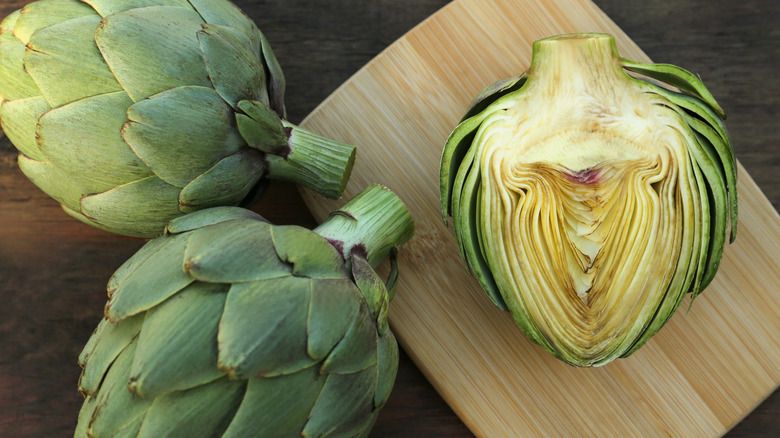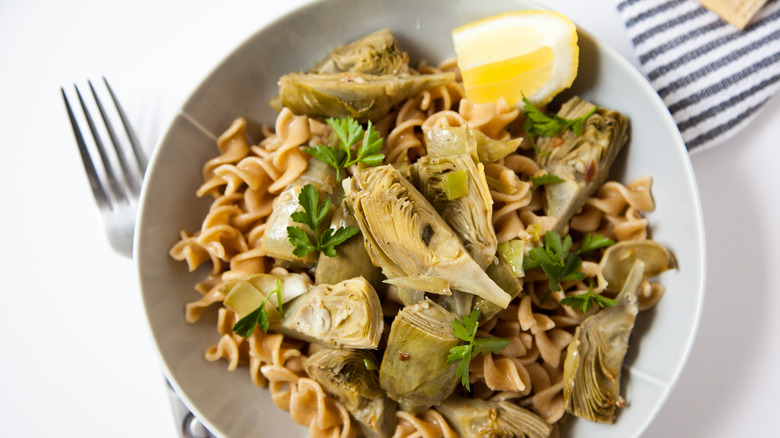The Part Of An Artichoke You Should Never Eat (Even When It's Cooked)
Artichokes are a curious contradiction: spiky on the outside but tender at the heart. When prepared properly, they're a springtime delicacy with a serious fan base. Whether you prefer them steamed, braised, grilled, or stuffed, they're a fiber-rich veggie that elevates any dinner with their earthy, nutty flavor and meaty texture, making them totally worth the extra prep work. But amid those tough layers of leaves and buttery goodness, there's one part of the artichoke that you should absolutely never eat: the choke.
Yes, it's actually right there in the name. The choke is the fibrous, fuzzy cluster you'll find at the center of a mature artichoke, sitting just above the prized heart. It's made up of immature florets and hairy filaments, and true to its name, it's a potential choking hazard. It's also completely inedible. No amount of cooking will make it palatable, and trying to eat it is like chewing toothbrush bristles.
This unique makeup is because artichokes fall into the daisy family. As an edible thistle, the choke is the flower-to-be. If left to grow in a garden, those feathery fibers would eventually bloom into a pretty purple blossom. But when harvested for culinary use, the artichoke is still immature. What's hidden beneath the tough petals is the stringy choke, and even when cooked, it remains dry and tough. For that reason, both chefs and home cooks remove it before serving. Maybe all these hidden layers are why the vegetable has long been considered an aphrodisiac.
The art of artichoke steaming
One of the most popular ways to eat an artichoke is simply steaming the whole thing. From there, it's easy enough to remove the choke. Once the outer leaves are removed or eaten, you'll reach the central cluster. Therein lies a fuzzy, spiky tuft nestled in the center. You can use a spoon to scrape it away gently, being careful not to gouge the tender heart below (which is the best part).
If you want to skip the hairy part and have access to a great grocer or farmer's market, look for baby artichokes. These guys are technically just smaller buds from lower on the plant, and they often don't have a developed choke. That means you can trim, cook, and eat the whole thing without worrying about choking on veggie hairs. They're tender, versatile, and easy to work with, especially if you want all the flavors and none of the fuss. Baby artichokes are at their peak from March to May, but they've been showing up in grocery stores year-round more often. If all else fails, there are always canned artichokes, which are one of the canned foods that are packed with protein and are a welcome vegetable to add to pasta salads and pizza.
Artichokes may seem intimidating at first, but once you get past the spiny exterior and down to the tender heart, they're one of the most rewarding vegetables in the kitchen. Prep them carefully, and you'll be left with one of the best bites in the plant world.

